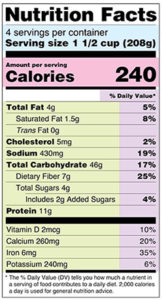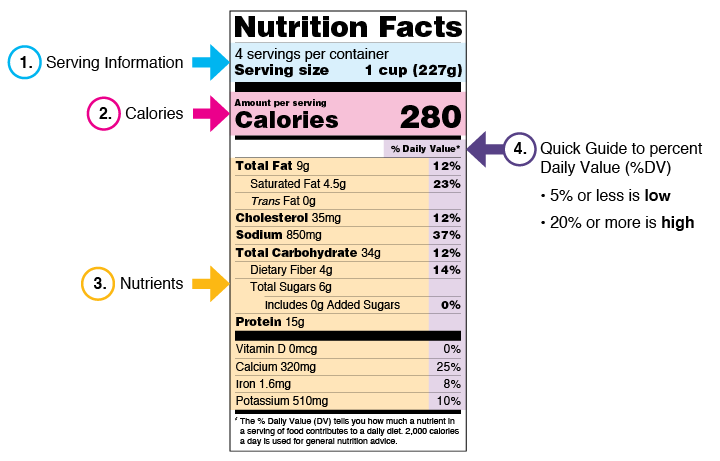The FDA recently made updates to food labels after three decades of consistent labeling. The new labels reflect new nutrition science and more realistic eating behaviors to better guide consumers in knowing what is best for their health. So what exactly is new about the labels? We’ll guide you through how to navigate updates and use them to your advantage to help reach your nutrition goals.
The Food and Drug Administration (FDA) has regulated nutritional guidelines for decades, providing consumers with crucial information macronutrient, micronutrient and mineral content of food products on the market. The first nutrition labels were launched in the 1970s with the influx of processed food into the mainstream marketplace. While labeling food products was at that time voluntary (except for those that included nutritional claims), these days it is mandatory to include information on calories, fats, unsaturated fats, cholesterol and sodium so consumers can make smart decisions on how they feed and fuel their bodies.
In January 2020, new nutrition labeling guidelines went into effect in response to the high proportion of chronic disease afflicting the US population. Heart disease, diabetes and obesity have skyrocketed over the last few decades and each may be preventable (and in some cases reversible) with healthy nutritional habits informed by clear facts listed on product labels. The label changes also take into account current culture around food consumption, which may guide today’s consumer in making healthy choices for their lifestyle by providing a more realistic overview on what they are more likely to consume.

Photo credit: FDA
Specifically, the changes include:
- Realistic serving sizes
- Larger font for calorie count information
- Added sugars are required to disclose and be more prominently highlighted
- Recommended daily values (%DV) are updated for sodium, fiber, and vitamins based on new scientific evidence
- Information on total nutritional value (in the case an entire package is consumed)
To navigate the new food labels according to the FDA, start by understanding portion size and calories within each portion at the top of the label, then work your way down the label to review specific nutrient counts and daily percentages within each color-coded section.

Photo credit: FDA
Being an informed consumer of foods and food products can help prevent chronic disease, but also allow for more precise measurement of calorie and macronutrient intake if you are on a goal-oriented program for body composition changes. The updated labels, while small in changes, can make a huge difference in knowing your realistic calorie and macronutrient consumption.
For a detailed breakdown on how to read new food labels, visit the FDA’s educational resource materials on nutrition labeling. Speak to a Nutrition Coach on how food labels can help track and stick to a detailed plan to reach a specific health goal.



